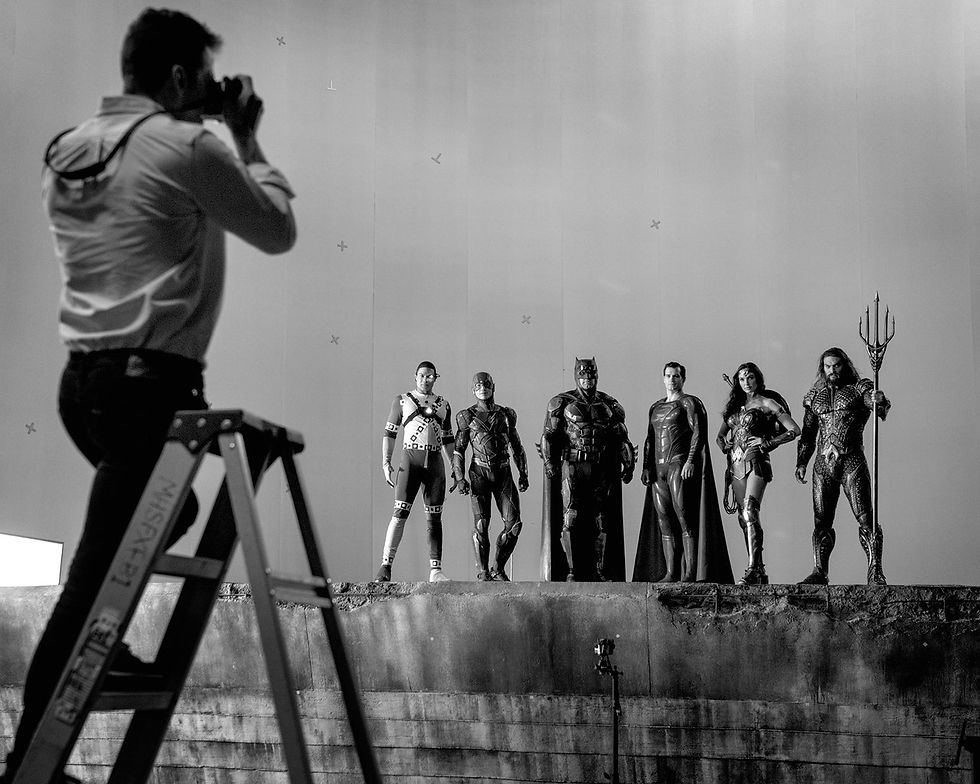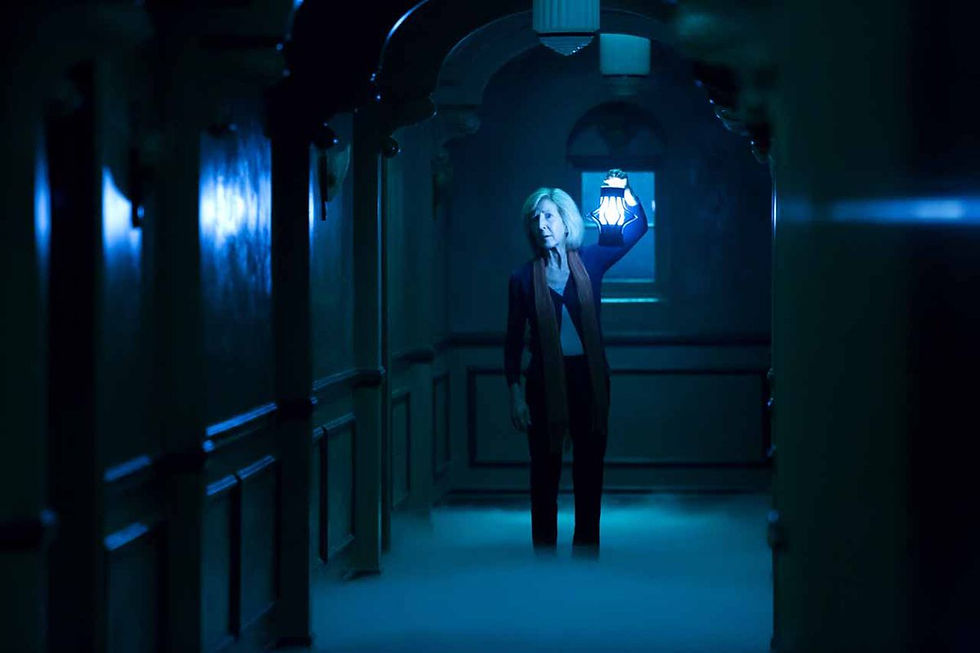Midnight Ghosts and Ending An Era
- Grace Davidson-Lynch

- Mar 12, 2021
- 6 min read
Imagine the smell of the place first.

What does a collapsing room smell like? Imagine the smell of the rotting seats, the moulding cushions and curtains draped around the room. The dark wood holding it all together must have an odour. And what about the screen hanging in tatters at the far end?
You can walk down between the rows of seats. Feel the plaster and dust cake the bottoms of your shoes. The crunching sound as you walk might remind you of something. Maybe it's like walking on fresh snow, or damp leaves. The swirling clouds you make as you brush your hands on the dirty seat might concern you. Imagine the years of falling dust you've disrupted.
What will it do to you?
And all while you picture this place, in all its smells and sounds, as you walk towards the stage and look at the peeling walls, you probably can't help but think about the old magic this room was once filled with. All the people, long dead, who filled those seats. All the events that called for the use of this room- first dates, 101st dates, time with family, all the thrills that only the pictures can produce in us.
As media lives and dies, we feel something. Maybe we feel sad, maybe closer to bittersweet or nostalgic. It's a sad fact, that our audience choices change as time rolls on. We don't want to watch something outdated.
But it feels wrong to condemn that magic to a slow, uneventful decay.
Space is an important aspect of any narrative, but horror makes particularly good use of it. Certain locations conjure different feelings of fear, the unknown, the subverted. Victorian manors, cemeteries, asylums, dark streets, and other cliched locales are the places that might come to mind. But horror can be made out of any situation. Space is not just a matter of symbolism. Horror narratives use space to map out our fears and emotions on a material plane.

In his book Laughing Screaming: Modern Hollywood Horror and Comedy, William Paul explains that horror films, in a way that is almost identical to comedies, attempt to create a festive and communal air in the theatres they are played in. He remarks on "...a kind of letting go, an indulgence that takes place within a safe environment which permits us to acquiesce without fear of consequence…" and contends that horror indulges an audience’s desire for release-
…the horror film allows us the pleasure of indulging our passivity, the pleasure of being liberated from the necessity of action. However disturbing the image on the screen may be, there is a certain comfort in knowing that we can deal with it solely by letting go, by screaming... In no other films are we so aware of other people in the theatre because in no other films are they so prompted by the film itself to make their presence known.
(pg. 67)
The cinema is the perfect location in which to create fear. Horror film as a genre has been a feature of the form from its inception. But there is one kind of horror experience that cinema abandoned- left to rot and fade away, acquiring its own kind of dignity in its death.
A midnight ghost show, or midnight spook show, consisted of an evening of spooky spectacles staged in cinemas across the United States from the 1930s to the 1950s. The shows were amalgamations of various forms- séance, magic, stage special effects, and film- strung together with a loose theme and a strange host (sometimes called the Ghostmaster), often presented as part of a double bill with a feature film or play. While it is unclear when exactly this format was developed, Elwin-Charles Peck is often credited with bringing the form to a wide audience. An evening may consist of magic tricks, illusions such as apparitions and levitations, often culminating in a 'blackout' sequence. Some illusions might require the use of audience volunteers. These shows also employed vaudeville comedy stylings to keep the evenings light and fun.

The blackout sequence was the main event. In an age where electrical lighting was still something of a novelty, a total blackout was quite shocking. The blackout sequence was usually proceeded by a climax in the story. Beth Kattelman quotes Ghostmaster Brandon in her article on the topic, as he describes his method in a production of "The Mad Doctor and his Chamber of Horrors”:
I started with an old guillotine. . . . Essentially the trick provided for a person to be placed behind the illusion and their head and hands placed in stocks. While the magician was talking to the audience and seemingly, not noticing what was happening, an assistant dressed as a hunchback with a terribly distorted face, came out and tripped the release. The blade fell, blood flew everywhere and the head fell into the basket. Spectators actually saw the head fall. The hunchback picked up the head in one hand and a very evil looking knife in the other . . . [and] headed down into the audience when the blackout occurred and the ghosts came out.
(pg.33)
This backout was also accompanied by a blinding flash of light. This flash served two purposes- the first was to momentarily blind the audience to make the darkness more pronounced, and the second was to charge any luminescent props. Streamers, balloons, cloth, and even the faces of willing audience participants were covered with luminous paint before the show. These props were then moved about by assistants, who ran up and down the aisle, or attached some props onto long poles that were held over the audience. As these flying images of skeletons and ghouls whisked around the theatre, the faces of some audience members would also light up in the blackout to the horror of patrons who did not expect to be seated next to their very own monster.
Midnight ghost shows evolved in step with the horror film. While earlier ghost shows took on the aesthetic of American spiritualism with apparitions and seances, shows that took place during the monster movie craze of the 1940s adopted more modern horror sensibilities. The psychic character who would have hosted an earlier incarnation of the ghost show was replaced by a mad scientist. With the 40's came the advent of the rubber monster mask, licensed by film companies, allowing actors to make multiple costume changes without having to work around the limitations of traditional theatrical makeup. Cinema owners benefitted from these shows too; with these cheap productions occurring at midnight, they fit neatly into a cinema's schedule.
But of course, it ended. The ghosts shows fell out of popularity for many reasons. The advent of the television meant audiences could stay in and watch something spooky. 1950's sensibilities led to curfews for teenagers in major US cities, eliminating a huge audience for the ghost show. The times were changing, and the ghost shows had carved a niche in the horror market that closed rapidly. The craze only lasted a few decades, and has been largely forgotten. You might hear the echoes in midnight screenings and rowdy viewings of Rocky Horror Picture Show. But the midnight ghost show is gone, and will likely never come back in the form it once existed.
So consider this my love letter to the weirdness of the midnight ghost show. As one era became another, those industrious magic men of yore manage to wrangle together two forms to create a new one. I could talk about the dramaturgical efficacy of a midnight ghost show, but I don't think I want to. For me, it is this magic from nothing, thinking outside the box to create a bizarre experience for an audience whose interest was already waning, that demonstrates the value of horror and theatre. As our world changes, keep your eyes open to the Midnight Ghosts. Look for those ideas that will die, or have already passed on, as a new era begins. You don't have to mourn, or get upset. But perhaps you can toast a new world and remember the old one, and take with you the good things that survived the change.
And always remember the smell of the place.

What do you think of the midnight ghost shows? Please leave your musings in the comments!
References
Paul, W 1994, Laughing screaming: modern Hollywood horror and comedy, Columbia
University Press, New York. Kattelman, BA 2010, “Magic, monsters, and movies: America's midnight ghost shows”, Theatre Journal, vol. 62, no. 1, pp. 23-39.
Images
Children watching a movie in a theatre © Weegee/ International Center of Photography
Undated and unaccredited spook show crowd © Cool Hand Communications Inc.
Decaying cinema seats photograph © author unknown
Decaying cinema screen photograph © Andre Govia



Comments